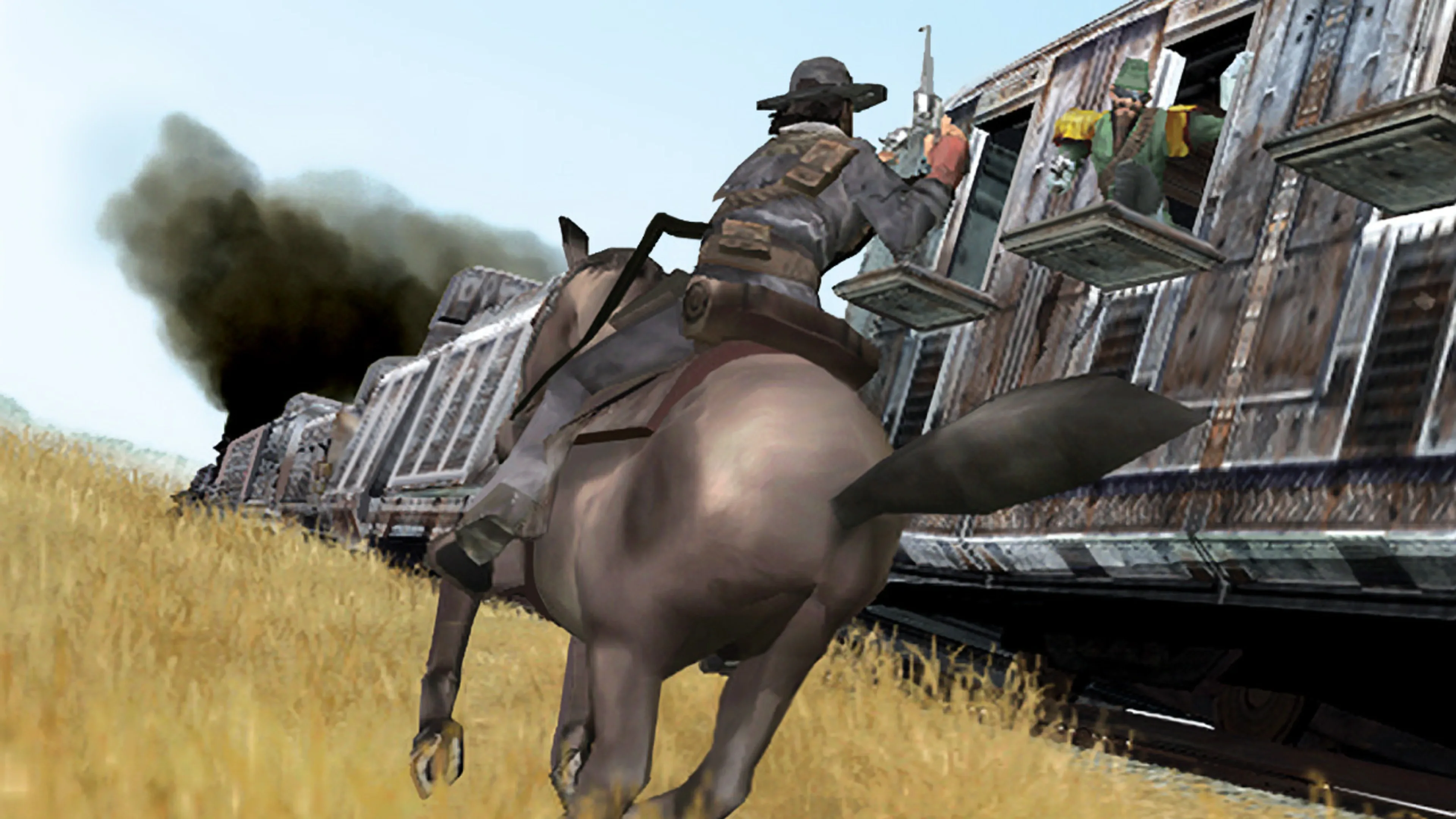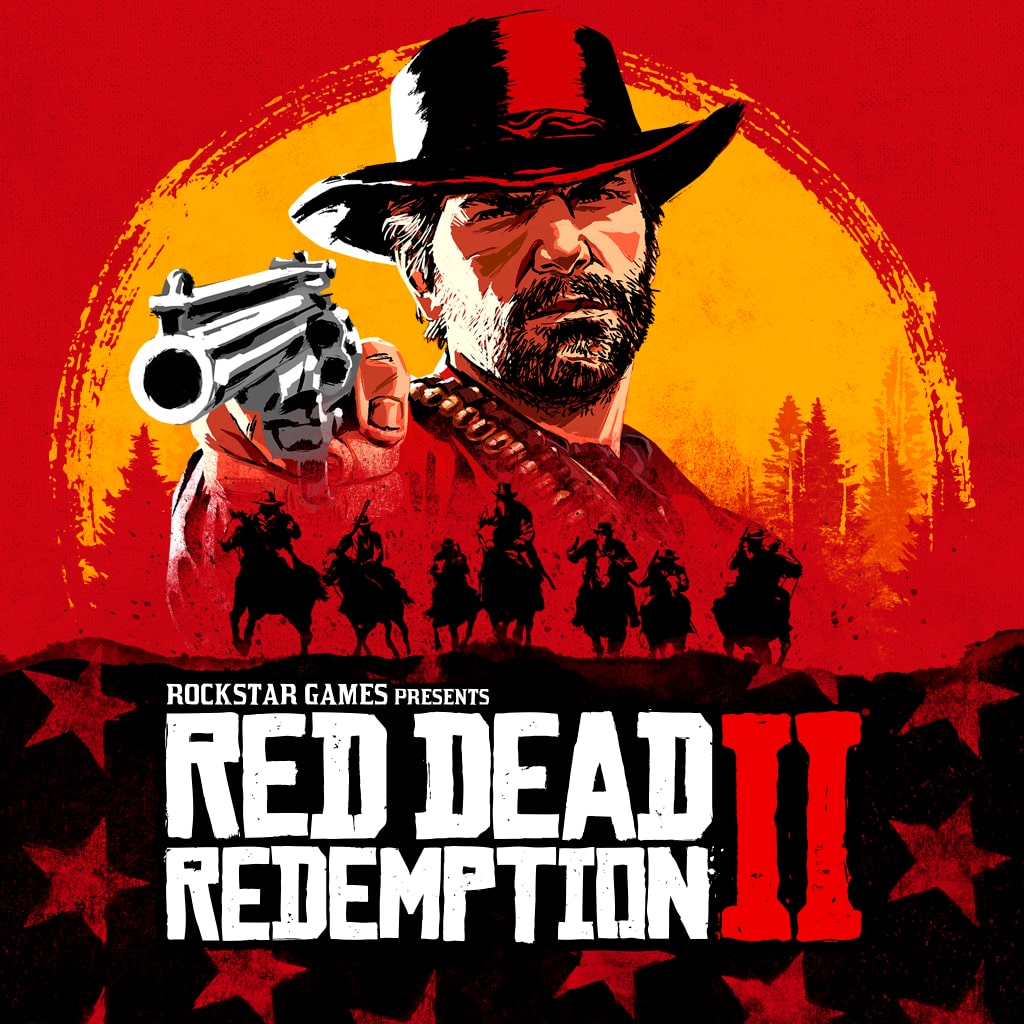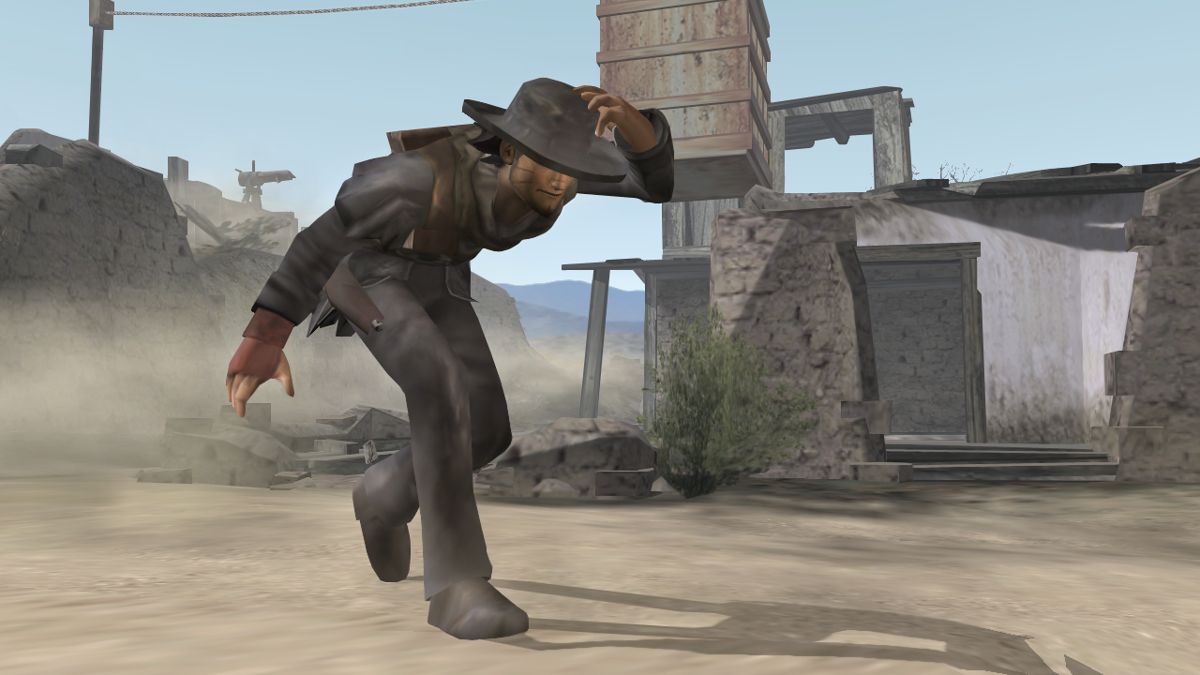Red Dead Revolver on PS2 and Xbox
Before the sweeping prairies and prestige-TV storytelling of the Red Dead Redemption games, there was a scrappier, pulpier trailblazer: Red Dead Revolver on PS2 and Xbox. Released in 2004, it wasn’t a free-roam epic. It was a mission-based, arcade-flavored Western shooter—compact, stylish, and loud. Two decades later, it plays like a time capsule from a parallel timeline where Saturday-matinee spaghetti Westerns ruled gaming. This retrospective digs into the messy, fascinating development, the gameplay loop, the story beats, the release and reception, how it actually sold, and how it paved the trail for the juggernaut that followed.
Red Dead Revolver began life not at Rockstar but under Capcom’s umbrella, with Angel Studios (the Midtown Madness team) at the reins. The pitch evolved from a police-action idea into a full-blown spaghetti Western homage, borrowing the rhythm of classic Italian cinema—dusty street duels, cracked deserts, theatrical villains, and a big, dramatic score. Midway through, Take-Two acquired Angel Studios and renamed it Rockstar San Diego, and the project changed hands. For a moment it teetered on the edge of cancellation, but Rockstar revived it, tightened the design, and shipped it. That rescue is more than trivia: it’s the fork in the road that turned “a cool Western shooter” into the seed of a generation-defining franchise.

A Western Built Like an Arcade Shooter
If you boot up Revolver expecting open-world freedom, you’ll holster your hopes fast. Revolver is level-based and proud of it. Each chapter is a theater set—saloon shootouts, train-top skirmishes, dusty town ambushes—built for clarity and swagger rather than wander and forage. You roll into an arena, read the angles, and start solving it with bullets and timing. That tight structure makes it incredibly replayable; every level is a snackable slice rather than a sprawling banquet.
The star mechanic is Dead Eye. Time snaps into syrup as you flick the reticle over weak points, hats, holsters, sticks of dynamite, and scarred chins. Release the trigger and your marks detonate in sequence. It’s not just slow motion; it’s rhythm gaming with bullets. Then there are duels, little pressure cookers where your thumb and nerves decide whether you become a legend or faceplant into the dust. These two systems—precision-queue shooting and one-on-one showdowns—are the DNA threads that later unfurl into Redemption’s most iconic moments.
The Cast: Larger-Than-Life Gunslingers
You play Red Harlow, a bounty hunter forged by grief when hired thugs murder his parents over a gold claim. Red’s journey binds him to a posse of memorable allies and foils: Annie Stoakes, a tough homesteader with a steadier trigger finger than most ranchers; Jack Swift, a dandy sharpshooter who shoots as if he’s signing his name; Buffalo Soldier, a powerhouse rifleman with battlefield gravitas; Shadow Wolf, Red’s cousin who mixes stealth and tradition; and a parade of rogues with faces you can draw from memory—Pig Josh, Ugly Chris, and a slew of corrupt officials and mercenaries. The game is a gallery of silhouettes that tell you who someone is before they say a word.
/cdn.vox-cdn.com/uploads/chorus_image/image/51306873/Brimstone.0.0.jpg)
The Story: A Straight-Ahead Vengeance Trail
Revolver frames its narrative like a stack of pulp magazines. Red Harlow’s past is the pilot: a burned ranch, a stolen future, a boy who grows into a bounty hunter with a debt to settle. The chapters play like episodes—new town, new score to settle, new piece of the conspiracy. It all ladders up to a governor with a dirty history and a web of military brutes and hired killers who did the deed. It’s not a sprawling ensemble drama; it’s a tight revenge yarn that knows when to tip its hat and move on.
Each mission focuses on a single idea. Defend a town from a gang raid. Board a train under fire. Clear a canyon of a fortified posse. Because levels are compact, the game avoids filler. Objectives are clean, arenas are readable, and enemy types push you to swap weapons and angles. You’re encouraged to replay with more swagger—fewer misses, flashier Dead Eye chains, higher-difficulty bounties.

Bounty Hunter Mode: Score-Chasing Before It Was Cool
Clear the main campaign and Bounty Hunter Mode opens the saloon doors wide. You revisit missions with optional challenges—finish under a time, pull off specific trick shots, collect hidden objectives—to earn cash and unlockables. It reframes Revolver from a weekend campaign into a medium-term score-chaser. In an era before roguelite leaderboards devoured our lives, this was Rockstar San Diego proving that structured replay could be a core loop, not a footnote.
Revolver also has Showdown Mode, a couch-multiplayer brawl with bots and human rivals, a cast of oddball playable characters, and maps tuned for fast reads and fast grudges. It’s the sort of four-players-on-a-sofa mayhem modern games often forget, and it still slaps. No unlock tree, no battle pass—just pick Pig Josh, light the fuse, and try not to blow yourself sky-high.
The Audio-Visual Vibe: Spaghetti Western Through and Through
Revolver’s art direction aims for bold silhouettes and stagey lighting rather than photorealism, which is precisely why it still looks coherent today. The palette is sunburnt reds and ochres, the camera sits low and mean, and the UI stays out of your way. The music leans into twanging guitars, brass stabs, and mournful melodies. It’s not a parody of Morricone-era soundtracks; it’s a love letter, and it sells the fantasy before a single shot is fired.

Release Timeline: Where and How It Landed
The game launched in May 2004 on PS2 and Xbox, arriving in the thick of the sixth generation’s golden hour. It later resurfaced as a PS2 Classic on PS3 and then on PS4 with trophy support, and it’s also available via Xbox backward compatibility. In practical terms, it’s easy to play today on modern hardware without digging your old console out of the attic. Resolution bumps and trophy lists give it just enough modern polish to feel welcome on a new TV.
At release, critics praised the atmosphere, the confident Western identity, and the headlining mechanics of Dead Eye and duels. Some knocked the campaign length and the stiffness in movement compared to the era’s smoother third-person shooters. Averaging out, Revolver landed in the respectable “good but not era-defining” bracket. The key, though, is what came next: a slow-burn cult reputation, steady word of mouth, and a reevaluation once Redemption reframed the whole brand.
No, Revolver was not a multi-million-unit avalanche out of the gate. It was a steady seller that found an audience, stuck around on store shelves, and gained momentum over time as curious players circled back after hearing whispers about that “cool Western shooter with the duels.” Its afterlife on digital storefronts and backward compatibility gave it a second wind, pulling in new players who arrived through the Redemption door and wanted to see where the trail began.

What Came After: From Revolver to Redemption
The most famous “what happened next” in this story is obvious: Red Dead Redemption (2010) and Red Dead Redemption 2 (2018). You can draw a straight line from Revolver’s tight, theatrical missions to Redemption’s open-world stagecraft. Dead Eye blooms from a neat trick into a generational mechanic; dueling becomes cinematic punctuation. The tone—somber wanderers, violent reckonings, the West in twilight—keeps the spaghetti-Western DNA while layering in American myth and tragedy. Revolver didn’t just precede Redemption; it enabled Redemption by proving the Western fantasy worked in 3D, pad-in-hand form.
Several Revolver ideas became Redemption staples. Dead Eye, obviously. Dueling, with visible tension and a just-so draw timing. The posse cast—distinct silhouettes whose gameplay kits match their personalities. And the notion that a Western shooter can be about style as much as aim: where you hit, when you mark, how you stage the encounter. Redemption expanded the canvas, but the brushstrokes began here.

Where Revolver Shows Its Age
There’s no getting around some early-2000s quirks. Character movement can feel rigid outside Dead Eye. Camera control lacks modern grace notes. Enemy AI is more cardboard cutout than desperado genius. Levels end just as you fall into the perfect rhythm. None of this ruins the fun, but they’re reminders that this is a 2004 design with 2004 assumptions. Treat it like a polished arcade shooter with Western flair, and it holds up far better than you might expect.
Revolver is perfect for adults with tight schedules. You can beat a mission in 10–15 minutes, feel clever, and get on with your evening. It’s also an antidote to open-world fatigue. Instead of a checklist map, you get crafted encounters with scoring potential and style expression. On PS4/PS5 or modern Xbox consoles, it’s painless to launch, trophy-friendly, and couch-multiplayer-capable. Sometimes you don’t want a hundred-hour odyssey; you want a six-shooter, a saloon balcony, and a problem to solve with panache.
Mini Buyer’s Guide: Best Ways to Play Today
On PlayStation, the PS2-on-PS4 version adds trophies and up-rendering, with Share features if you like to show off clean duels. On Xbox, backward compatibility gives you sharp scaling, quick resume, and modern controller niceties. A decent modern TV in Game Mode plus a comfortable controller is all you need. Pro tip: bump the sensitivity a notch, then let Dead Eye do its magic for precision.

Tips for New (or Returning) Players
Use Dead Eye as a setup tool, not a crutch—tag dynamite belts, unprotected hats, or weapon hands to break enemy posture fast. In duels, focus on the draw rhythm: don’t over-aim, commit to a clean spread of marks, and release decisively. Swap weapons to match arena geometry—rifles for long alleys, revolvers for close quarters, shotguns for saloon interiors. And in Bounty Hunter Mode, practice routes: shaving seconds off a run is half the fun.
Revolver deserves its flowers, not just as a prequel in brand only, but as a design statement. It reminded the industry that a clear fantasy—be the gunslinger, win the duel, walk off with the sun at your back—can carry a game without bloat. It prioritized readable arenas, punchy feedback, and memorable characters. In a medium that sometimes mistakes “bigger” for “better,” Revolver is a masterclass in confident scope.
Deep-Cut Trivia and Fun Facts
Several early character designs leaned heavily into exaggerated silhouettes so players could ID threats at a glance. The development team studied spaghetti Western staging—how hats, coats, holsters, and dust trails read in wide shots—then translated those reads into gameplay clarity. Duel timing was iterated over and over until the window “felt” like a showdown, not a QTE. And, in the most Rockstar way possible, the soundtrack curation doubles as worldbuilding; the music alone tells you what kind of West you’re in.

A Balanced Verdict, With Spurs On
If you stack Revolver against contemporary giants, it’s not the deepest or longest ride. But as a cult classic Western shooter, it’s essential. It’s lean, stylish, and mechanically satisfying. It’s the crack of the starter pistol before the marathon, the prototype that got the green light for the open-world epics we celebrate today. Whether you’re here for history, nostalgia, or a quick fix of duel-slinging swagger, Red Dead Revolver still earns a seat at the saloon table.
Red Dead Revolver is the small-but-mighty origin story—more than a footnote, less than a saga, exactly the shot the genre needed. Revisit it to hear the first echo of Dead Eye, to feel that duel tension coil in your thumb, and to remember that sometimes the most fun you can have is fifteen minutes, a revolver, and a problem that needs solving right now.